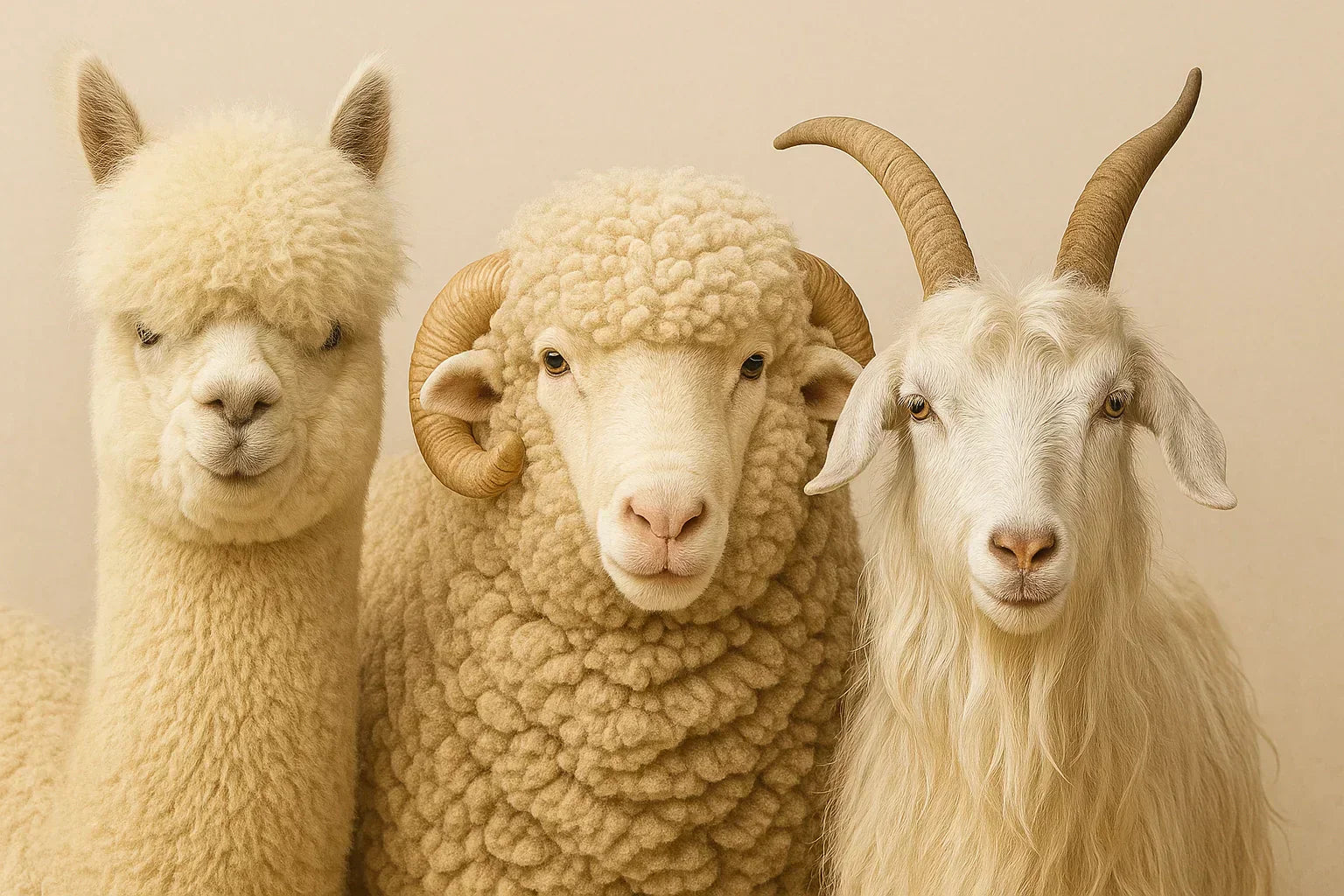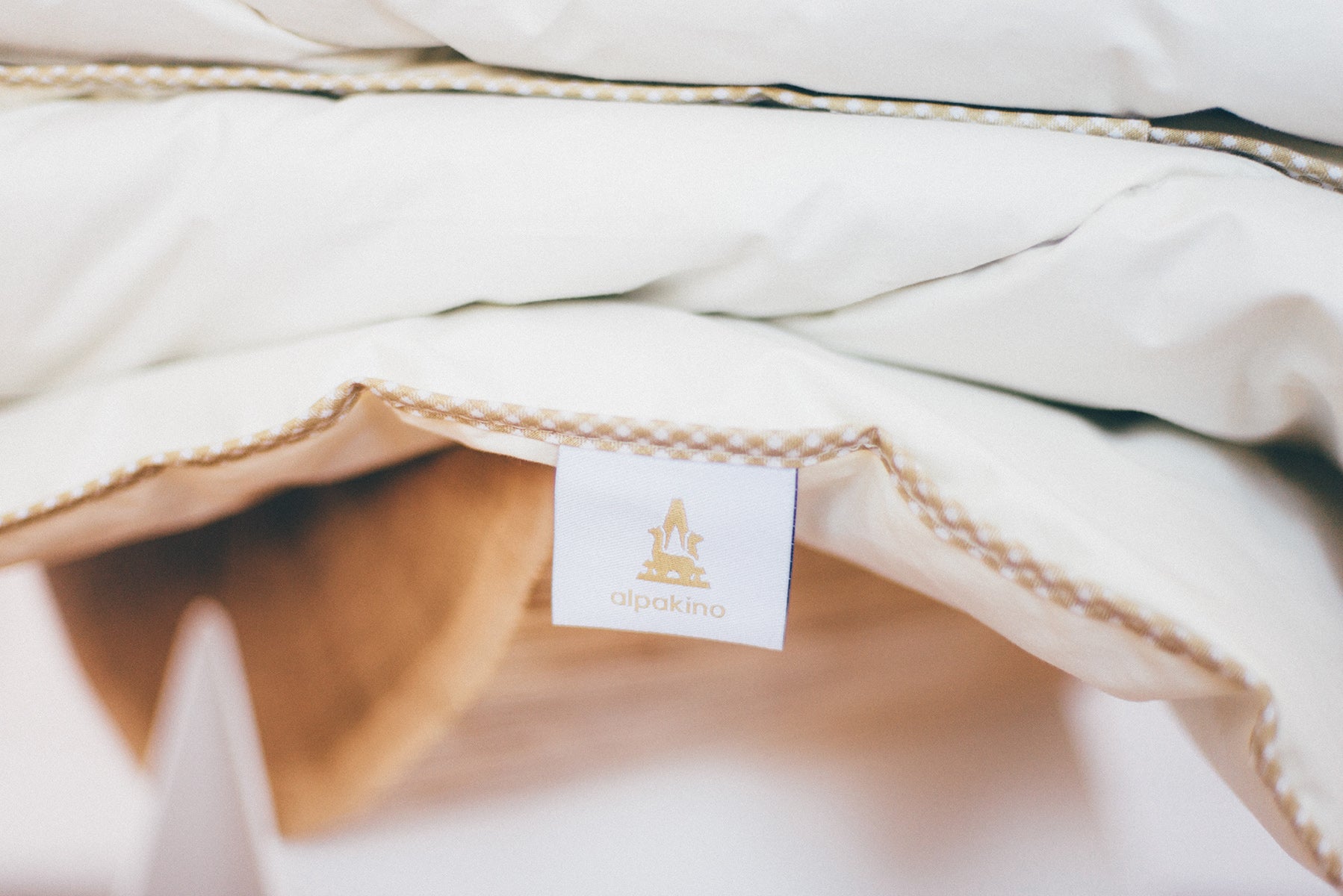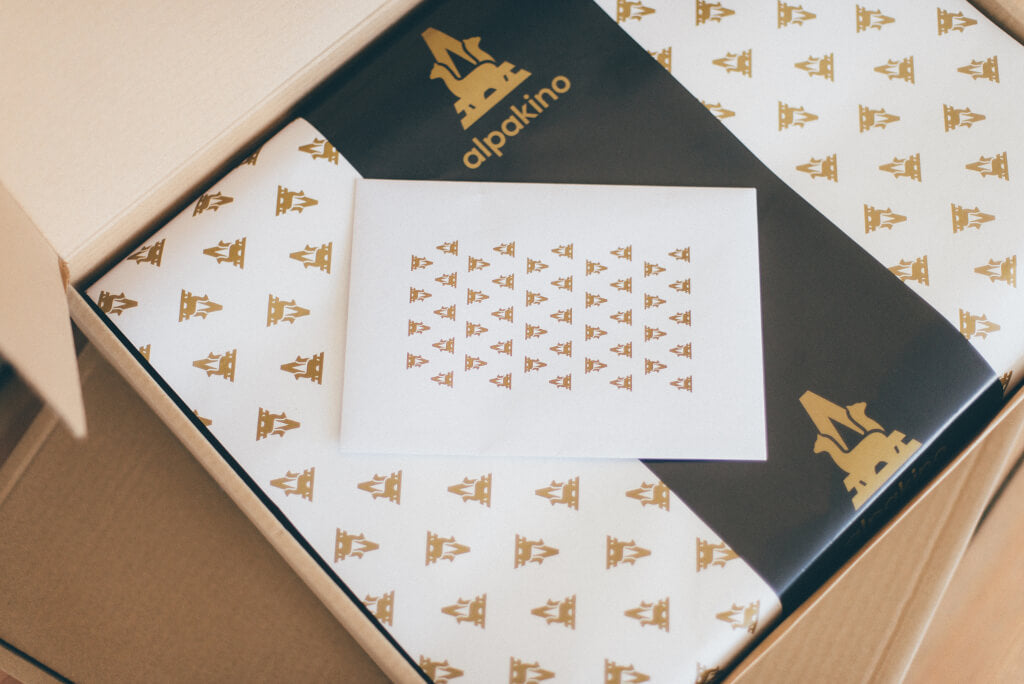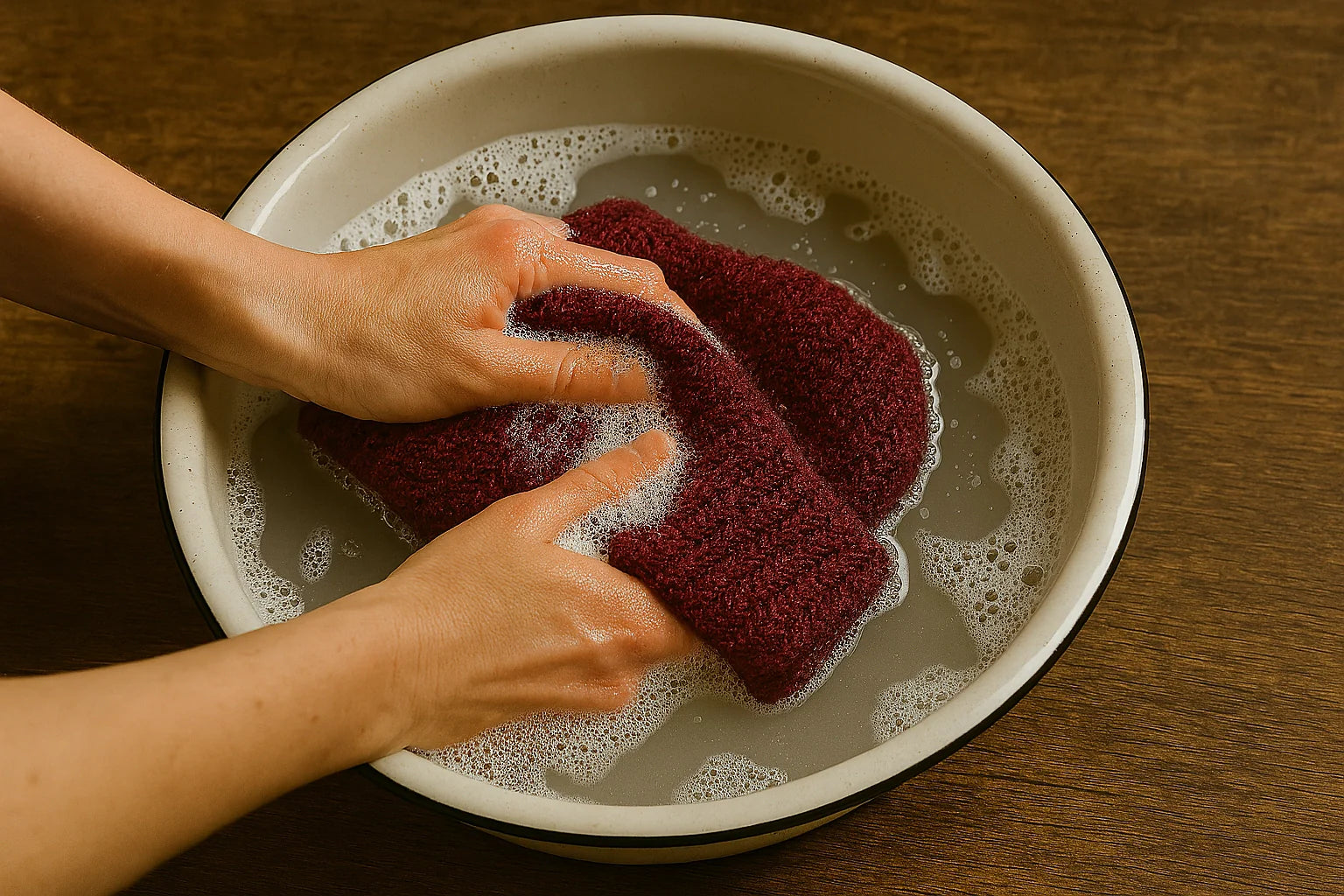DIFFERENT FACES OF WOOL - WHICH TO CHOOSE?

-
From sheep, goats, alpacas, and more—wool can come from a variety of sources. It's no surprise, then, that it varies in softness, durability, and properties, and consequently, price. Let's take a look at the characteristics of the most popular types of wool, and their advantages and disadvantages.
Sheep wool - Merino
Sheep wool is a widely known natural fiber used to make various textile products, such as clothing, carpets, blankets, and so on. However, even within this category, there is a huge variation in quality, primarily determined by the breed of sheep from which the fiber is obtained. It's no wonder, then, that some associate sheep wool with an unpleasant odor and scratchy texture, while others consider products made from it "high-end." Among the most popular and valued is Merino wool. It comes from merino sheep raised in the mountains, including New Zealand and Australia. Merino sheep are exposed to significant temperature fluctuations and strong winds there, but they have become resistant to these harsh conditions thanks to their wool. What benefits does it offer humans? Its ability to regulate heat is particularly noteworthy. When temperatures are high, merino fiber expands, allowing excess heat to escape. When temperatures are cold, it contracts, causing products made from it to become warmer. Another advantage of this type of wool is undoubtedly its ability to absorb moisture. Another advantage of merino wool is its resistance to odors, as even after prolonged use, fabrics made from it do not develop the unpleasant odor that often occurs with products made from sheep's wool.

Despite its many advantages, merino wool also has its drawbacks. One is its low resistance to abrasion and deformation, which is why the clothing industry typically uses artificial additives to enhance durability and strength. Without proper finishing, which carries a much higher price tag, merino wool products quickly stretch and deform even with normal use. Many people also find it too warm, and even the thinnest products made from it are unsuitable for high temperatures. Another drawback of this fiber is its very long drying time. While, as mentioned, merino wool wicks moisture away efficiently, patience is required once it gets wet. Similarly, washing is much more demanding and time-consuming. Moreover, merino wool is often considered friendly to allergy sufferers, but this is not entirely true, as Merino fiber is covered with lanolin, which is responsible for allergic reactions such as dermatitis, itching, redness, and even runny nose, sneezing and red eyes.
Goat wool - cashmere and mohair
Cashmere is a true Mercedes in the world of wool. Few fabrics can boast such refinement. It's a fiber with a velvety texture that retains heat perfectly. Its great advantage is that it provides several times more warmth than sheep's wool, yet is six times thinner than a human hair, making it incredibly soft and lightweight. Cashmere is also breathable and absorbs moisture well, wicking it away almost instantly. Unlike sheep's wool, cashmere doesn't absorb water and dries quickly. It's also very resilient, which in turn allows it to drape beautifully, resist wrinkles, and quickly return to its original shape. Like Merino, cashmere doesn't absorb odors, and thanks to its self-regulating cleaning properties, it's also dirt-resistant. Cashmere acquires all these properties thanks to the conditions in which it must perform its role; cashmere goats live in the Himalayas at altitudes of 3,000-5,000 meters. meters above sea level, where temperatures can reach as low as -30 degrees Celsius. Unfortunately, the cashmere sweaters we find in stores are usually made from second-grade cashmere, whose fibers are hard and don't perform as well. Therefore, despite their high price, they have little in common, in terms of quality, with those made from soft fibers, which are the most expensive in the world and fetch prices in the thousands of złoty. This means that, in reality, few people who have ever handled cashmere have truly experienced this first-grade cashmere with all the characteristics we've mentioned.

Another noteworthy fiber derived from goats, this time Angoras, is mohair. Tibet is considered the origin of this goat species, and for a long time, this delicate fiber was exclusively obtained from there. Then, in the 16th century, the first farms were established in Turkey, which for many years became a leader in mohair production. In the 1830s, Angora goats were successfully transported from Turkey to South Africa, where South Africa became the world's leading producer of this fiber. Currently, in addition to South Africa, the largest producers include Turkey, Australia, and the United States. This exceptionally delicate fleece has a silky sheen, while also being lightweight and resilient. Mohair is also valued for its thermal insulation properties. The aforementioned delicacy of this fiber is both its advantage and disadvantage. On the one hand, it is pleasant to the touch, but it also tears, pills, and felts very easily, causing the mohair fibers to clump together into a compact structure that isn't necessarily aesthetically pleasing. All these characteristics mean that mohair is often combined with other types of wool that lack these properties. Furthermore, many clothing manufacturers are phasing out the production of clothing containing mohair due to the actions of PETA, which presented a report on the mistreatment of Angora goats on farms in South Africa. Since 50% of the world's mohair comes from South Africa, there's a high probability that you're purchasing a product made from fiber obtained without respect for animal rights.
Alpaca wool
Alpaca wool was called "Inca gold" even during the Inca Empire and is still considered the most valuable and softest wool in the world. Alpacas are animals native to South America, inhabiting the Andes at altitudes of approximately 3,500 to 5,000 meters above sea level. These unique animals, initially found primarily in Peru, Chile, and Bolivia, have spread throughout the world due to their precious fleece, including Europe, where they can be found in Poland, among other places. One of the advantages of alpaca fiber is that, thanks to the air pockets located throughout the entire surface of the hair, it has excellent insulating and thermoregulatory properties, which is one of the reasons why alpaca wool duvets have become so highly valued. In many ways, alpaca wool is compared to cashmere because, like cashmere, it is lightweight, soft to the touch, breathable, odorless, has excellent moisture-wicking properties, and is dirt-resistant. It also comes in 22 natural colors.

Alpaca wool, like other fibers, can be itchy, primarily due to the quality and thickness of the fiber. Among the softest are those called " baby alpaca ." This term is often misinterpreted because, as it might seem, it doesn't refer to fiber from a young alpaca; rather, it refers to the fiber's thickness, measured in microns. The finer the fiber, the fewer microns, and therefore the softer it is. Alpaca fiber can even exceed 30 microns, but it is then unsuitable for clothing and other accessories. Hair up to 22.5 microns thick is considered "baby alpaca," while those below 19 microns are called "royal alpaca." Fleece in these categories is considered the best fiber in its field. It will not cause discomfort or itching during wear, among other things. Therefore, all clothing and accessories, such as alpaca hats, should be made from this type of fiber. Not only young alpacas possess "baby alpaca" fleece; some several-year-old alpacas can also boast this treasure, provided they are high-quality animals. Young alpacas, too, don't always have "baby alpaca" fiber; it all depends primarily on the animal's quality, but also on its health, diet, and, in the case of an adult alpaca, even on whether it is pregnant or nursing. Alpaca wool has nothing in common with llama wool, which has very thick fibers, and unfortunately, the two are often confused. The most important characteristic of alpaca wool is that it does not contain lanolin, which, as mentioned earlier, is responsible for allergic reactions. Therefore, alpaca fiber is completely safe for allergy sufferers.
Let's buy wool products wisely!
When deciding to purchase wool products, it's worth exploring the properties of each type and seeking out trusted and recommended manufacturers and retailers. This will help you understand which type of wool will meet your expectations and what to avoid. High-quality wool products aren't cheap, and it's important to be aware of this. Therefore, relying solely on a low price can often result in a product that doesn't deliver on all the positive aspects it should theoretically possess. Therefore, sometimes it's worth spending more, as only with proper care can you enjoy your purchase and use of your wool products for many years.



